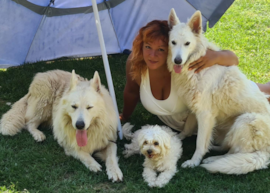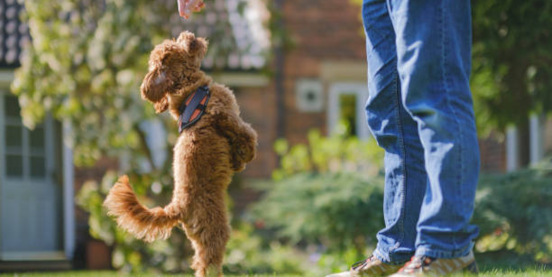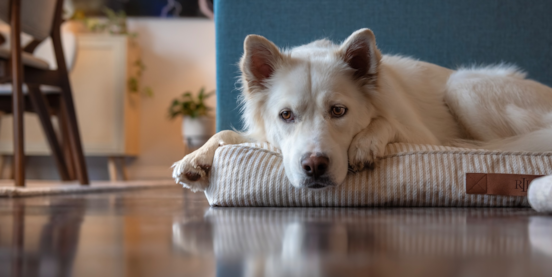Premier Pups > Breed Insights > Top 5 Important Pack Leadership Techniques For Pomeranian Training
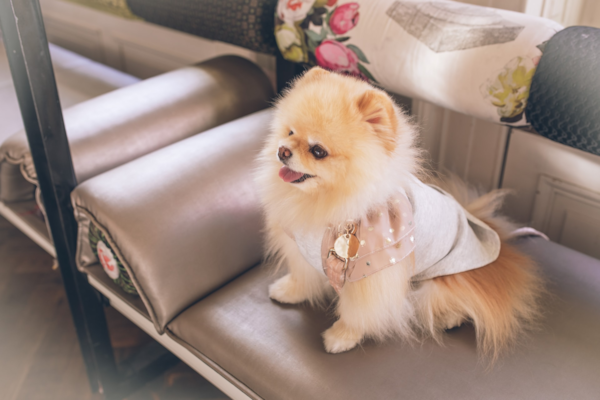
Published Thursday, August 18, 2022 by Elena R.
Bringing home a new puppy is one of the best feelings in the world. That's when you get to experience bonding, puppy fever, and sweet puppy cuddles. The first few weeks of having a new puppy are also the most important for training. That's when they learn the rules of the house and understand who their pack leader is. During these first few weeks, it’s essential that you establish routines and rules for your new best friend.
Your little fur baby is a lot like a toddler in the way that they require training to become well-behaved. However, unlike your toddler who can speak and communicate with you, your Pomeranian will only understand you via non-verbal signals and actions. Therefore, it's up to you as an owner to establish yourself as the pack leader in order to set them up for long-lasting success with good behavior habits.
Table of Contents
Teach Your Pomeranian to Sit and Stay
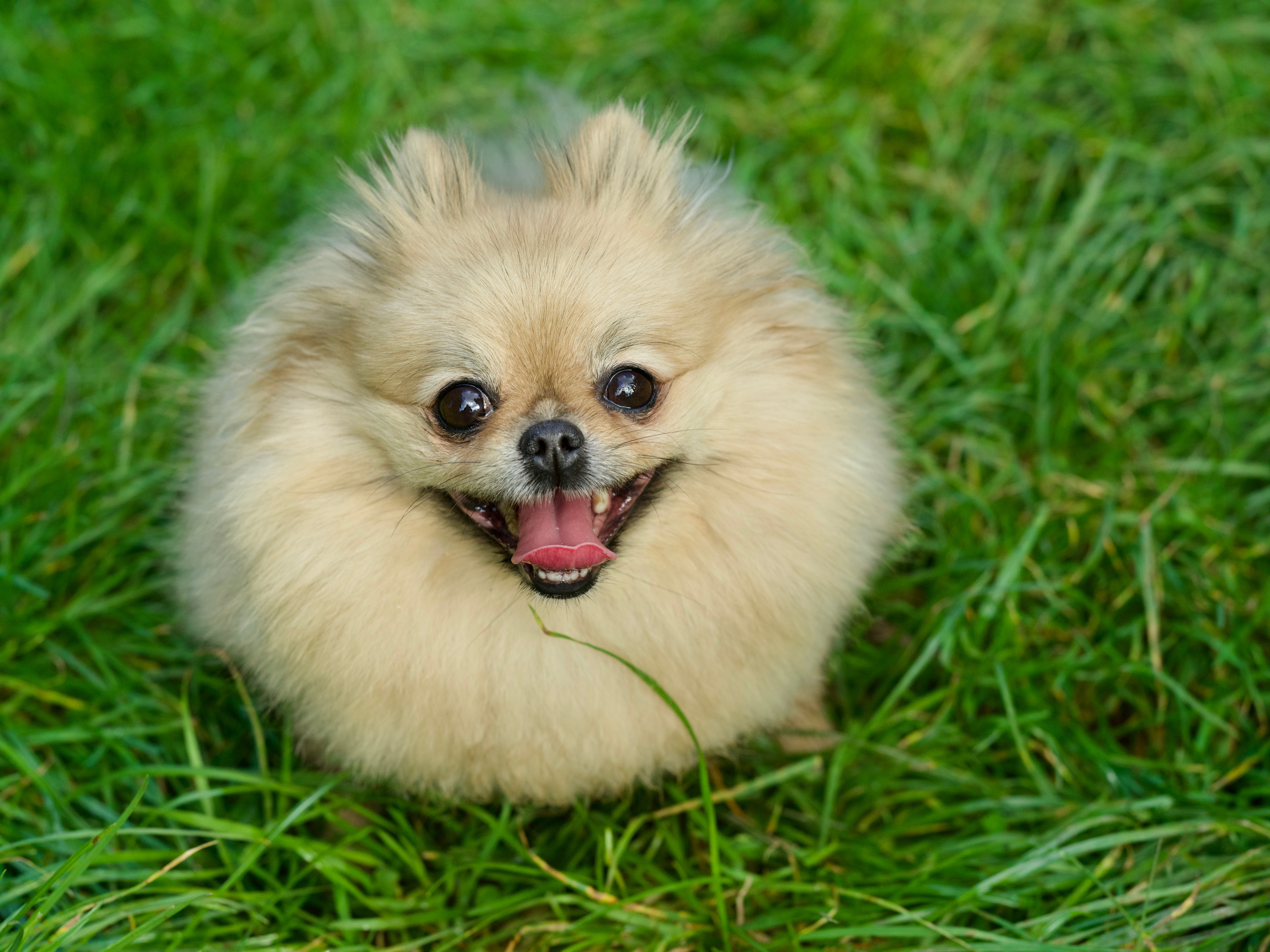
Pomeranians are very intelligent dogs, so they will learn this command quickly. It is very important that you teach your Pomeranian to sit and stay before teaching him any other commands. If a dog doesn’t know how to sit and stay, it will be difficult for them to learn what comes after these basic commands.
The most common mistake people make when teaching their dogs new tricks is rushing through the process. Every command takes time, and it’s important to be patient and consistent.
There are several ways to teach your Pomeranian to sit and stay, but among them, one seems to give the best results. Having a treat in your hand and lowering it towards your puppy’s forehead will give your pup the instinct to sit. Once he does, he receives the reward in your hand.
Teaching your Pomeranian to stay is a bit trickier, especially if your puppy is energetic. For this command, your puppy will need to have mastered SIT on cue. Once your puppy is in the SIT position, tell him to stay or wait using a hand gesture of your choosing. The best way to practice this is to take baby steps. Let your puppy sit for a few seconds after giving him the command to STAY or WAIT and reward him. As you go through this step, you can add more seconds before giving the treat to your pup. Once you mastered keeping your Pomeranian to SIT and WAIT for at least 20 seconds, you can begin to move away from him once you give him the command to STAY.
It’s important to practice the SIT and STAY command until you can easily step away from your Pomeranian without him following suit.
RELATED: 10 Common Dog Training Mistakes To Avoid
Enforce "Down" Commands in Pomeranian Training
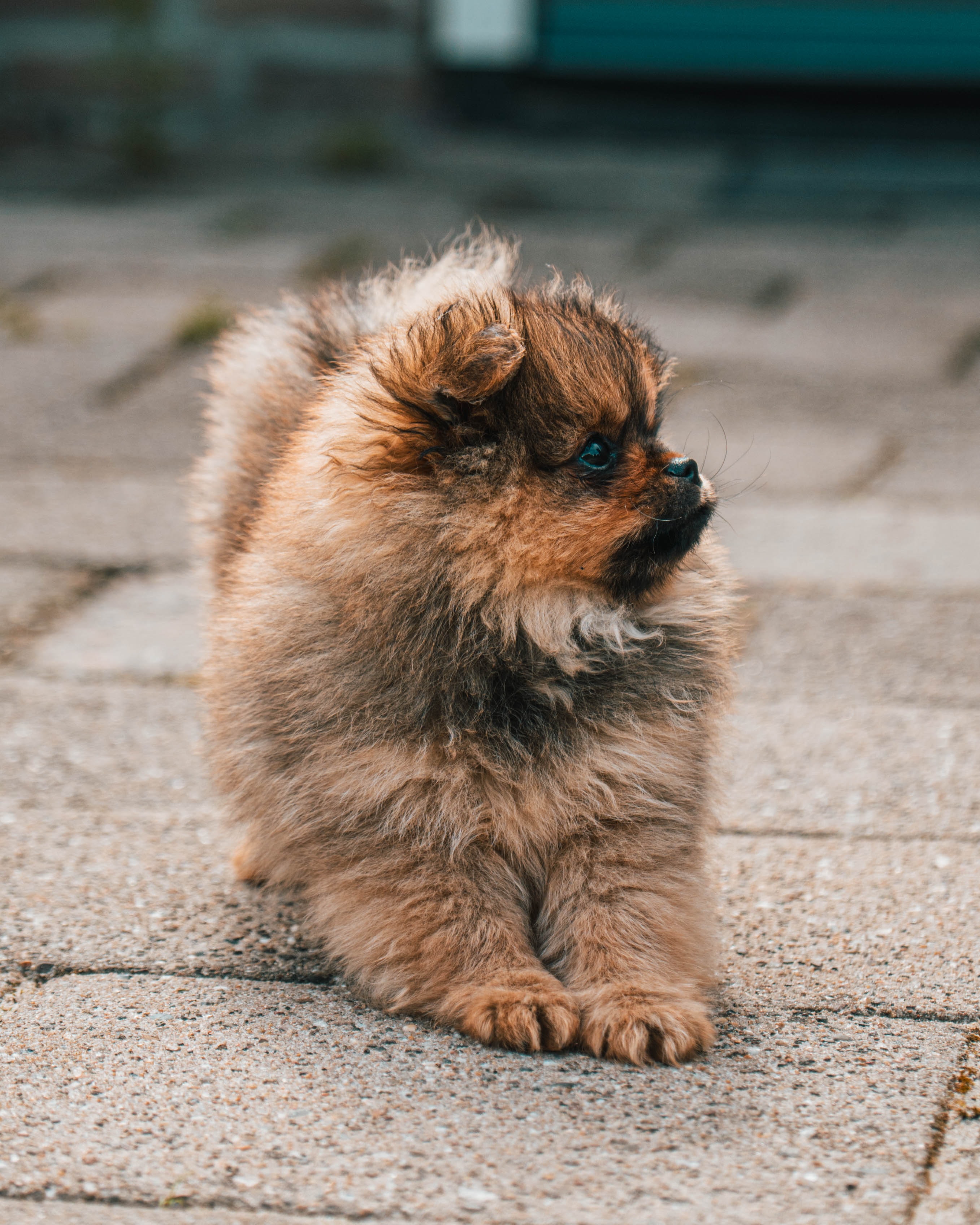
The DOWN command is an important part of Pomeranian training. It's how you get your dog to lie down on his belly. This can be helpful for many reasons. It teaches your Pomeranian discipline, and it works wonders as a calming technique.
This command is very much like the SIT command. You begin with a treat in your hand, but instead of lowering the treat to your puppy’s forehead, you lower it to the ground in front of him. Instinctively, your puppy will want to take the treat while standing. To ensure that your puppy doesn’t just take the treat as soon as it touches the floor, it’s best that you begin this step with him in the SIT position. You can use various gestures to let your Pomeranian know what you want from him. You can hold the treat close to his nose and lower it while his eyes are on the treat, or simply put the treat on the floor and cover it with your hand until your puppy takes the DOWN position instinctively.
As with any command, practice makes perfect. It's best that you practice this command a few times every day for a few weeks. Your puppy will master it and you will be a proud pet parent.
RELATED: How to Train a Puppy
Walk Your Pomeranian in an Orderly Fashion
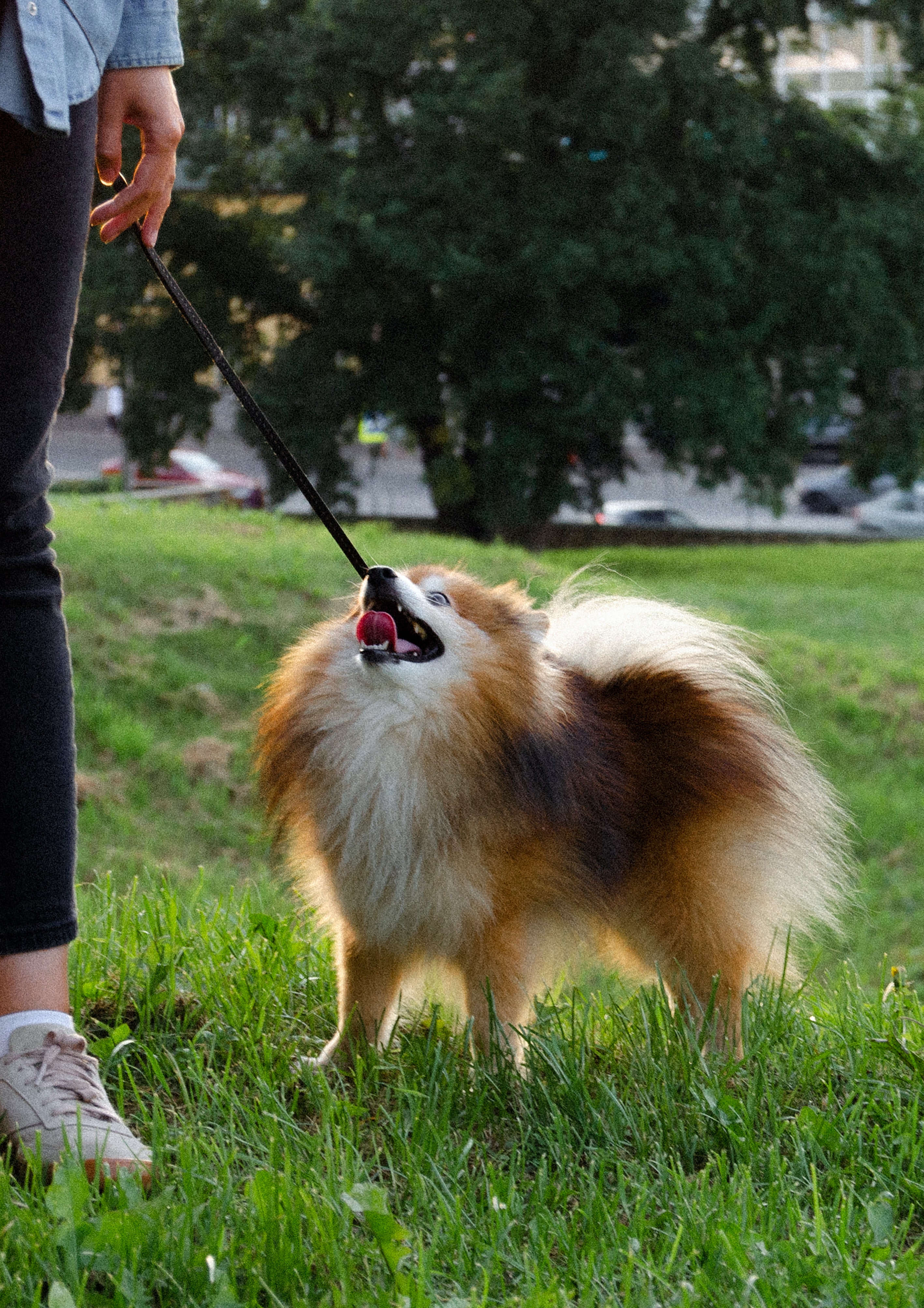
One of the most important pack leadership techniques in Pomeranian training is establishing leash-walking rules. The most important thing to do when it comes to walking your Pomeranian is to avoid letting them run free. A leash should always be used, as it ensures that your puppy will be safe.
While walking a Pomeranian on a leash can seem like a restriction at first, in time you will find that the benefits far outweigh any initial resistance.
This step begins at home, in a setting where your puppy feels comfortable and safe. You can use the time before your puppy is fully vaccinated and ready for outdoor walks. This typically means that you have around 4 weeks to master walking indoors before moving the lesson outdoors.
It is best that you first allow your Pomeranian to become comfortable with wearing the collar and leash indoors. Practice walking calmly around your home with your Pomeranian puppy close to your side. Don’t let your Pom walk ahead or behind you and try to correct any leash pulling with a slight tug on the lead. Letting your Pom walk ahead of you will make him the leader, so it is very important to correct this when it happens.
Once your puppy has mastered walking calmly by your side, you can begin to add various distractions and practice commands like SIT, STAY, and DOWN. If your puppy ignores the distractions, remains calm while on the leash, and follows your commands, he is ready for safe outdoor walks.
RELATED: Understanding Dog Body Language
Use Good Dog Behavior Praise
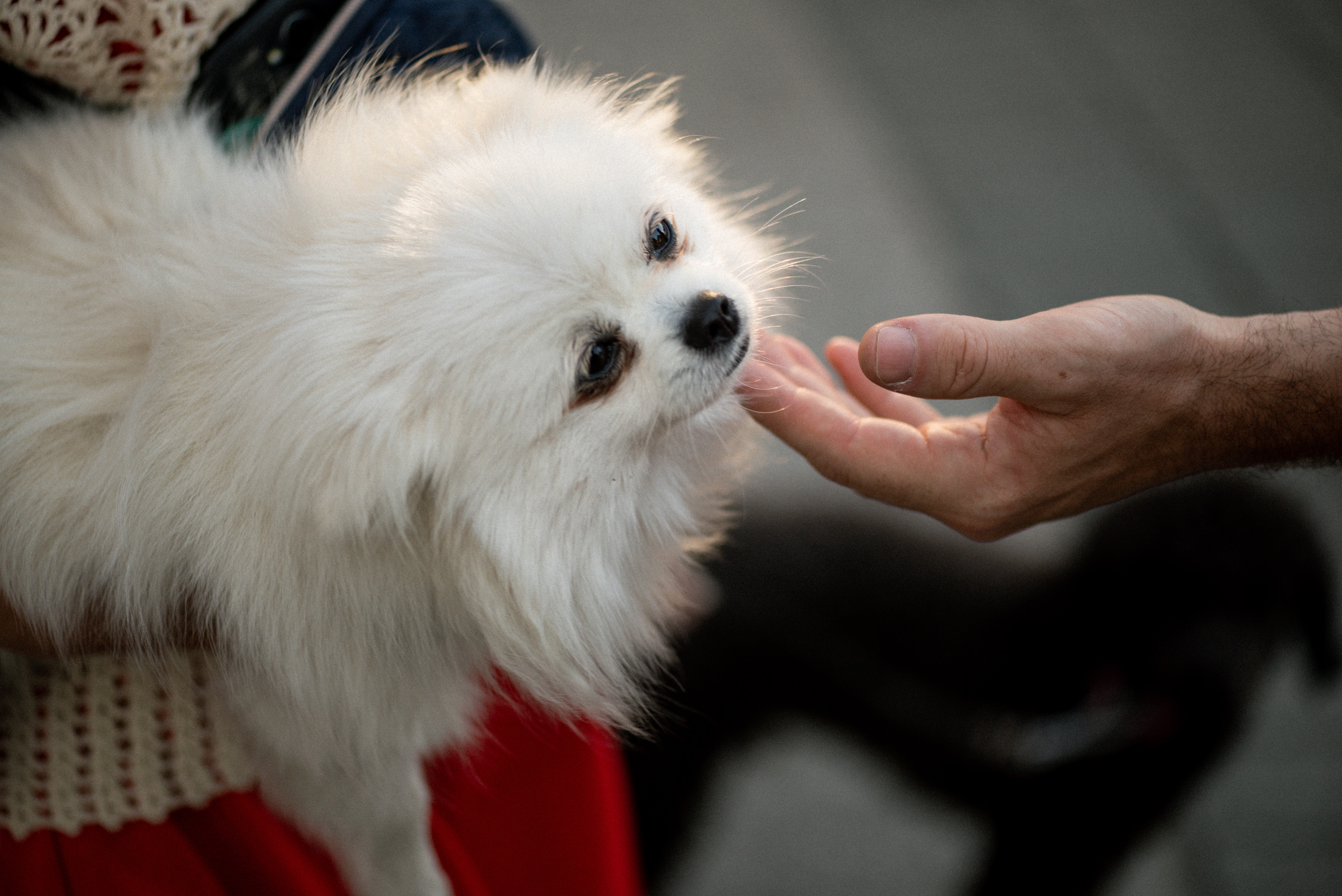
Dogs crave to please their owners, it’s a trait they have picked up through centuries of domestication. They love to make their pet parents proud and are happy when they do so.
One of the best ways to help your Pomeranian understand what you want from them is to use good dog behavior praise. Use a high-pitched voice with a happy, and consistent tone. Don’t shout or whisper. Your voice should be as loud as it needs to be to get his attention.
Praise works wonders in training. It’s your way of telling your dog that you are happy with his/her behavior, and it’s your dog’s way of understanding he did something good. Use as much praise as you can and spoil your dog with positive reinforcement whenever you get the chance.
RELATED: 10 Reasons Why Dogs Lose Interest in Training & How to Fix it
Poms Need a Calm and Assertive Owner
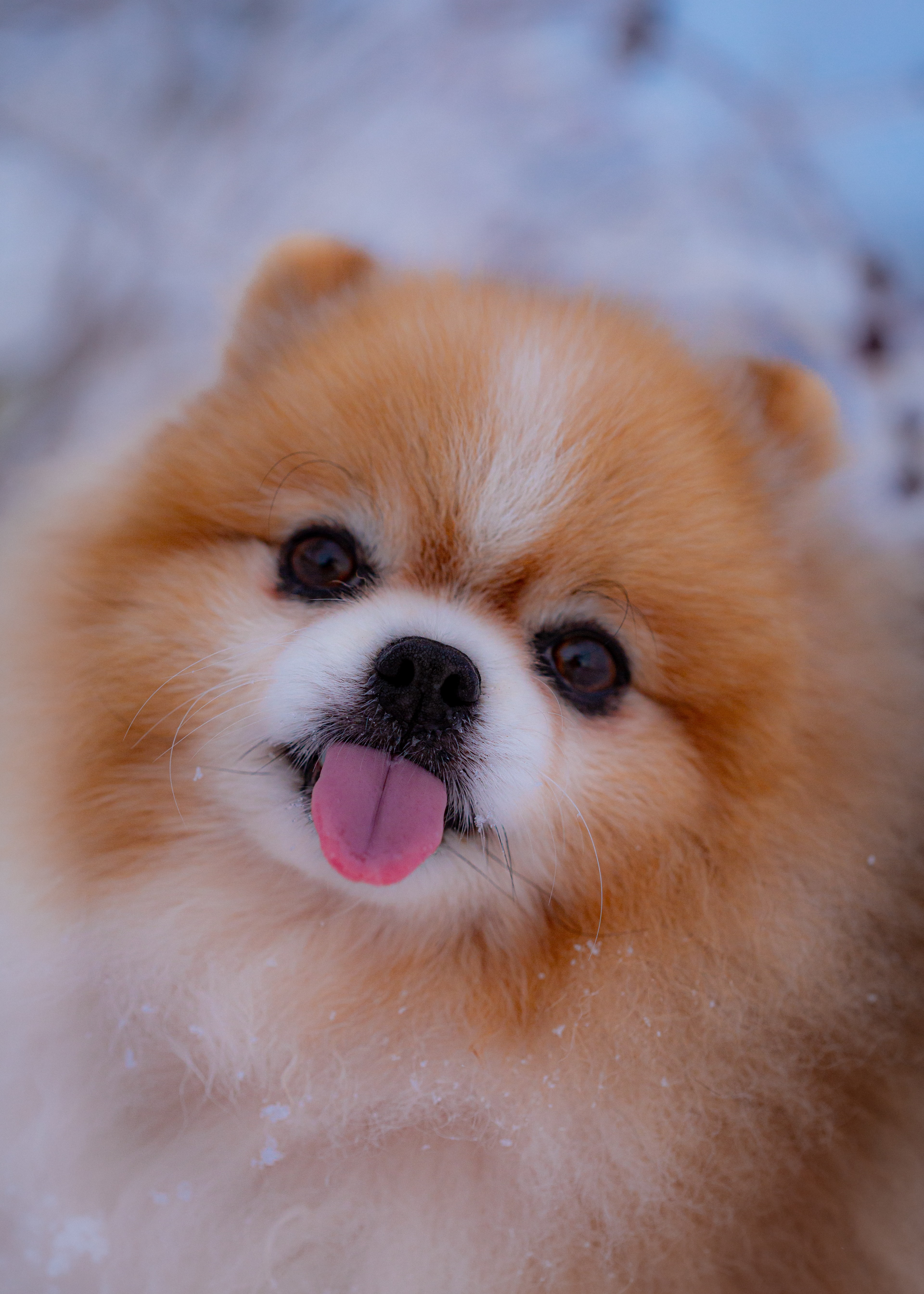
A happy Pom requires a calm, firm owner who is understood as the pack leader, and who can provide the leadership necessary for establishing good behavior habits. The relationship between you and your dog should be one of mutual respect. This means that both parties need to clearly understand each other's roles.
A Pomeranian needs an owner that is willing to always take control and provide structure when needed. When training Pomeranians, it is crucial that you use positive reinforcement methods rather than negative ones such as yelling or punishing.
If your Pom grows up in an environment where they feel safe enough to challenge their own boundaries, they will grow into confident adults.
RELATED: New Puppy Owner Guide
Tips From Training Experts
- Fix negative behavior as soon as it happens
- Correct leash pulling when your puppy is still young
- Don’t allow your Pomeranian puppy to jump on visitors
- Master one command at a time and remember that practice makes perfect
- Socialize your puppy early and reinforce good behavior both indoors and outdoors
- Never stop rewarding your dog with treats and praise
- Practice saying the command word only once and allow your puppy sufficient time to execute it before repeating it. Command word repetition will teach the puppy to execute a command only after hearing the word multiple times. This should be avoided.
Scroll down to see FAQs about training a Pomeranian!
What To Read Next
10 Reasons Why Dogs Lose Interest in Training & How to Fix it
Dogs are brilliant creatures that are capable of learning much more than we give them credit for. It’s no secret that we all want our dog to be the “goodest” of them all. A dog that is well-mannered around others, sociable, obedient, friendly,... Read More
How to Treat Your Dog’s Separation Anxiety
Dogs have been around for thousands of years and before they embarked on the long journey to domestication, they lived their entire lives in packs. Members of a pack are always together. They are surrounded by their family 24/7 which means that they hunt, sleep,... Read More
Frequently Asked Questions
How to establish pack leadership with your dog? Establishing pack leadership with your dog is crucial to having a healthy relationship with them. To become the pack leader, you need to create a strong bond of trust and respect with your dog. This means being consistent with your behavior and expectations, and enforcing boundaries in a calm and assertive manner. Dogs are highly perceptive to your energy, so being confident and firm but not aggressive is key.
How to train a Pomeranian? Training a Pomeranian requires patience, consistency, and positive reinforcement. Start with basic obedience training by teaching your Pomeranian simple commands such as "sit," "stay," and "come." Use positive reinforcement techniques, such as treats and praise, to reward good behavior. Socialize your Pomeranian from a young age to help them feel comfortable and confident in a variety of situations. Consistency is key, so make sure to use the same commands and techniques every time you train your dog. Remember to keep training sessions short and fun, and to always end on a positive note.
When to start Pomeranian training? Pomeranian puppies can start training at 8 weeks old. Basic commands like "sit," "stay," and "come," along with house-training should be started early. Positive reinforcement should be used, with consistency and short sessions. Pomeranians are intelligent and respond well to training, but patience and consistency are important for success.
Is Pomeranian training hard? Training a Pomeranian can be challenging at times, but it is not necessarily hard. Pomeranians are intelligent dogs that can learn quickly, but may be stubborn and prone to barking. Positive reinforcement, patience, and consistency are key to successful training. With effort, Pomeranians can learn a variety of commands and behaviors, making them great companions.
What are some Pomeranian training tehniques? Pomeranian training techniques include positive reinforcement, clicker training, and crate training. Positive reinforcement rewards good behavior, clicker training marks desired behavior, and crate training establishes the crate as a safe and comfortable space. It's important to be patient and adaptable when training a Pomeranian.


